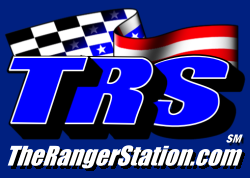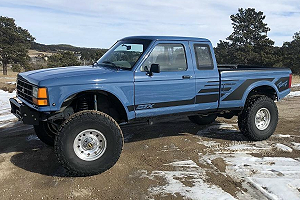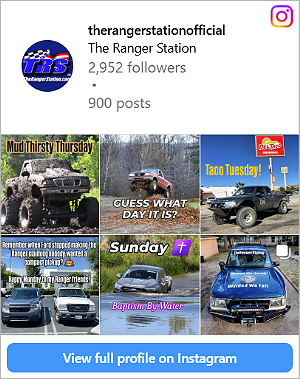generic
Member
- Joined
- Mar 25, 2009
- Messages
- 15
- Reaction score
- 0
- Location
- Stillwater, OK
- Vehicle Year
- 1996
- Make / Model
- Ford
- Engine Size
- 4.0L V6
- Transmission
- Automatic
I need to replace the fuel-rail-to-lower-intake gasket(s) on my 1996 4.0L OHV as they have begun to get sucked into the front and rear pair of intake ports. Mine is the plastic spacer (~3/16" thick) sandwiched between 2 thinner gaskets (paper I think, don't have them off yet). I have the intake plenum removed (and thus all associated lines, connectors and throttle/cruise cables) as well as the coil pack and plug wires. Next up is removing the fuel rail and injectors and I want to be sure I do it right (I've already had a wonderful experience with gas in my eyes, nose and mouth while replacing the fuel filter, despite taking every precaution and following every step for depressurizing the system). I have a few days before I can move forward so it's a good time to dig into a few remaining questions:
1) As I can't crank the engine at this point, is there a better method for relieving fuel pressure than depressing the schrader valve and creating a mess/hazard?
2) Should I cap off the fuel supply & return lines after disconnecting them from the fuel rail? Or should I not even bother disconnecting them and try to move the fuel rail around with them connected? Note: I will probably have a fuel pressure gauge attached at the schrader valve the entire time so I can be sure there is no pressure in the system while working on it (yes, I am still gunshy after the fuel filter incident!).
3) This one is more from curiosity as I will leave it opened anyway... Does loosening or removing the gas cap help relieve pressure or just prevent it from building back up?
4) For lubing the new injector O-rings (Fel-Pro), some people say to use Vaseline or gear oil (do they mean like 90W differential lube?), yet others say to NOT use petroleum products at all, and still others say to not use petroleum products while recommending petroleum jelly icon_confused
icon_confused , and then some say to use dilluted dish soap or cooking oil. LOL! The only consensus I've seen is to not use silicon-anything. I realise a forum is not always the best place to ask for an authoritative answer, but I don't want my new O-rings drying out or disintegrating. What is the safe recommendation for use with these O-rings?
, and then some say to use dilluted dish soap or cooking oil. LOL! The only consensus I've seen is to not use silicon-anything. I realise a forum is not always the best place to ask for an authoritative answer, but I don't want my new O-rings drying out or disintegrating. What is the safe recommendation for use with these O-rings?
5) The torque specs I've seen for the intake manifold studs were for the '97 4.0L and given as 9-11lb/ft. Can anyone confirm this for 1996 ('96-'98 seemed to each employ different intake gasket configurations)? Also, I marked each stud's position before wrenching and noticed that one of them began to turn when I loosened its plenum nut. After removing the nut, I set my torque wrench to 10lb/ft and tightened the stud but it clicked well before my mark was back in the original location. I haven't torqued it any further as several people have said they break easy? The plenum nuts are also spec'd at 15-18lb/ft for 1997, though Ford's TSB said 18.5lb/ft after installing the improved gasket, can anyone confirm this spec for the '96 as well?
1) As I can't crank the engine at this point, is there a better method for relieving fuel pressure than depressing the schrader valve and creating a mess/hazard?
2) Should I cap off the fuel supply & return lines after disconnecting them from the fuel rail? Or should I not even bother disconnecting them and try to move the fuel rail around with them connected? Note: I will probably have a fuel pressure gauge attached at the schrader valve the entire time so I can be sure there is no pressure in the system while working on it (yes, I am still gunshy after the fuel filter incident!).
3) This one is more from curiosity as I will leave it opened anyway... Does loosening or removing the gas cap help relieve pressure or just prevent it from building back up?
4) For lubing the new injector O-rings (Fel-Pro), some people say to use Vaseline or gear oil (do they mean like 90W differential lube?), yet others say to NOT use petroleum products at all, and still others say to not use petroleum products while recommending petroleum jelly
5) The torque specs I've seen for the intake manifold studs were for the '97 4.0L and given as 9-11lb/ft. Can anyone confirm this for 1996 ('96-'98 seemed to each employ different intake gasket configurations)? Also, I marked each stud's position before wrenching and noticed that one of them began to turn when I loosened its plenum nut. After removing the nut, I set my torque wrench to 10lb/ft and tightened the stud but it clicked well before my mark was back in the original location. I haven't torqued it any further as several people have said they break easy? The plenum nuts are also spec'd at 15-18lb/ft for 1997, though Ford's TSB said 18.5lb/ft after installing the improved gasket, can anyone confirm this spec for the '96 as well?













